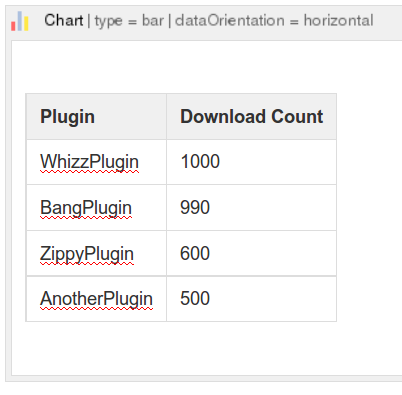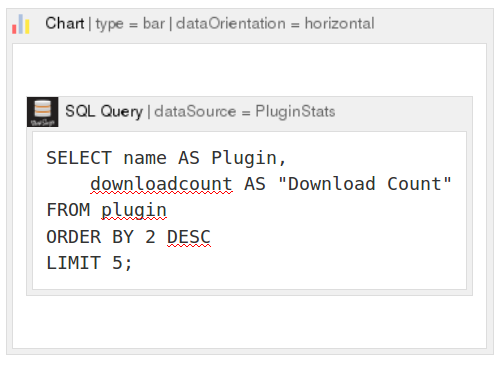...
Confluence macros can be nested within other macros. This allows very powerful combinations, like Unix pipes, where one macro fetches data and feeds it to another. A good example is the chart macro, which accepts tabular data from any source: a static table, CSV, SQL, or anything else returning tabular data:For instance, the chart macro can take a static table as input:
| Macro | Result | ||||||||||||||||||
|---|---|---|---|---|---|---|---|---|---|---|---|---|---|---|---|---|---|---|---|
| Confluence Markup | Results | ||||||||||||||||||
| Static content |
|
But it can also take output from a SQL macro:
| Macro | ResultSQL-generated content | |||||||
|---|---|---|---|---|---|---|---|---|
|
(or CSV, or any other table-generating macro)
This plugin composability allows very powerful combinations. Like Unix pipes, one macro fetches data and feeds it to another.
This is great, but only works when the macro in question was designed to accept the "rich text" XHTML generated by another macro. The chart plugin can have a nested macro, but the SQL Query plugin can't, for example.
Use-cases
Why would we want to send dynamic content to a macro not expecting it? Here are a few situations:
- You write a
parammacro that returns a HTTP parameter from the URL, and want to use it to parametrize a SQL query. - You want to use SQL results in Javascript in a
htmlmacro.
The solution
The solution is to create a wrapper macro that accepts rich text as input, converts it to plain text

